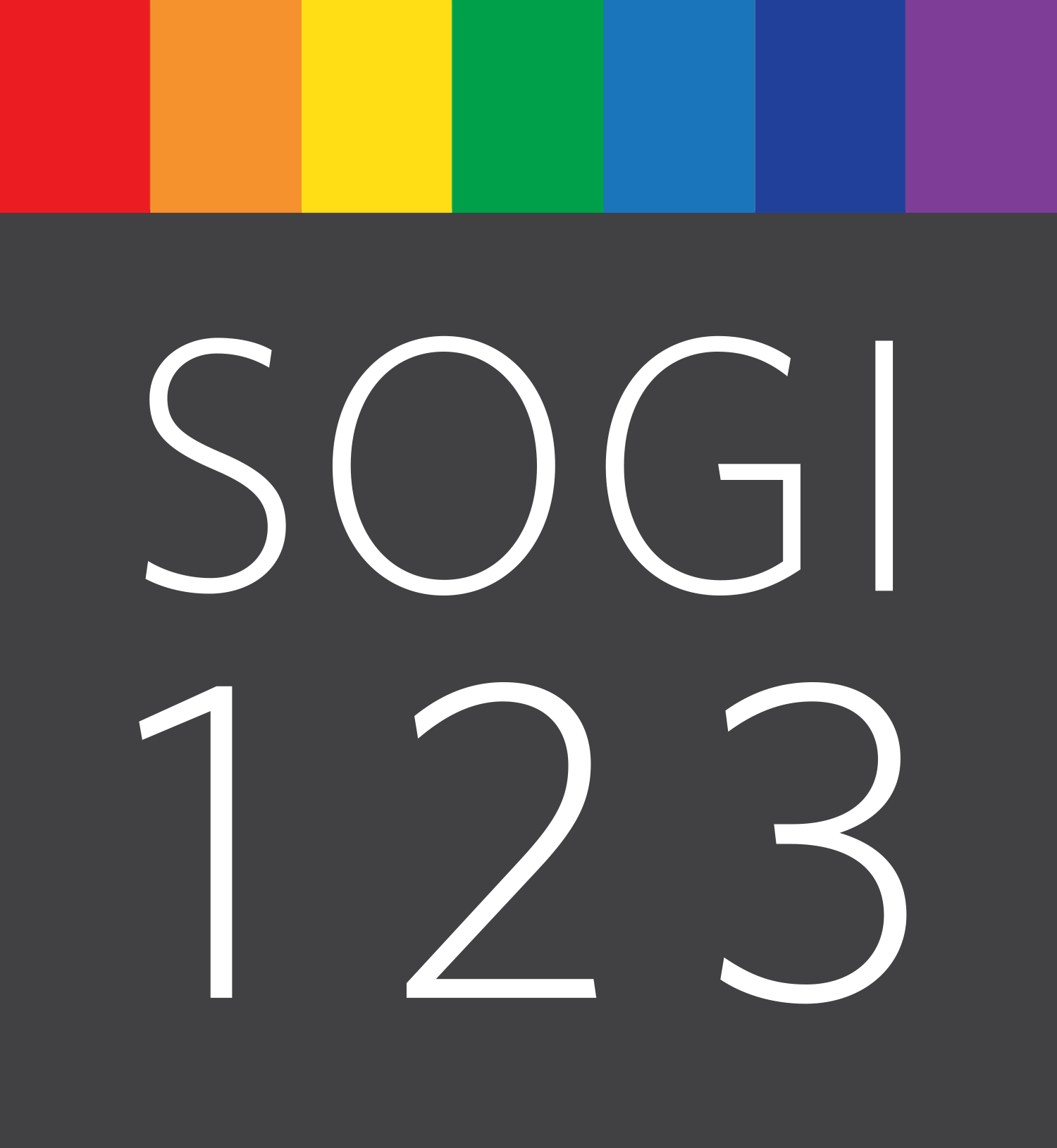
SOGI-inclusive policies and procedures save lives.
Effective policies and procedures that explicitly reference SOGI have been proven to reduce discrimination, suicidal ideation and suicide attempts for all students.* What is your district policy? Read on to learn how to create or improve policies and procedures for your district.
On this page: 10 Key Policy Components / Proven Peer Strategies / Understanding the MOE Directive
10 Key Components

Ten Key Components for Effective SOGI-Inclusive Policies and Procedures
This list was compiled by the Ministry of Education SOGI Working Group for consideration when creating or updating your policy/procedures. Videos highlighting some of these components can be watched here.
1. COMMON LANGUAGE
All parties will be well-informed of and equipped with appropriate and respectful language. Watch video.
2. SAFETY/ANTI-HARASSMENT
Proactive and reactive measures that include sexual orientation and gender identity will impact all students. Watch video.
3. SELF-IDENTIFICATION
Students will have the right to self-identification, which includes the name by which they wish to be addressed and the pronouns that correspond to their gender identity.
4. CONFIDENTIALITY
Students will have the right to the confidentiality of their sex, gender, and name.
5. DRESS GUIDELINES
Students may express their gender identity or gender expression through what they wear to school. A dress code should be as all-inclusive as possible, which may include removing pronouns. Watch video.
6. GENDER INTEGRATED AND INCLUSIVE ACTIVITIES
Integrated and inclusive activities will enable students to join teams and groups that they feel correspond with their gender identity. Watch video.
7. EDUCATOR TRAINING
All staff will be provided with knowledge and tools to develop a broad understanding of SOGI and the impact on students. Watch video.
8. INCLUSIVE LEARNING
Classroom materials and activities will contain positive images and accurate information about sexual and/or gender diversity. Watch video.
9. FACILITIES
Individuals may choose to use washrooms and change rooms that match their gender identity, including non-gendered single-stall washrooms and change rooms. Watch video.
10. INCLUSIVE EXTRA-CURRICULAR ACTIVITIES
Students will be included and accommodated for in all extra-curricular activities regardless of their sexual orientation or gender identity, including support to set up a Gender-Sexuality Alliance/Gay-Straight Alliance or similar club.
Curious about the possible challenges or successes other districts have had while implementing SOGI-inclusive policies? Watch the Lessons Learned videos for reflections from various districts and some of their advice.
Download the Ministry of Education SOGI Policy Guide for full details.
Proven Peer Strategies

What Others Are Doing
These strategies are highly recommended and have been proven by your educational peers.
Inclusive Anti-Harassment Policy
The Langley School District introduced an Anti-Harassment and Anti-Discrimination Policy in 2014, and revised it in 2015 to define inappropriate behaviours and actions and prevent discrimination and harassment. The policy explicitly recognizes that students of sexual or gender minorities face a unique set of challenges within schools, which may have profound social consequences.
SOGI Policy
The Vancouver School Board first implemented a stand-alone Sexual Orientation and Gender Identity policy in 2004. They now have a detailed Policy Handbook that details their commitment to establishing and maintaining a safe, inclusive, equitable, and welcoming learning and working environment for all members of the school community, regardless of real or perceived sexual orientations, gender identities, and gender expressions.
Inclusion Policy
The Nanaimo-Ladysmith School District passed an Inclusion Policy in June 2016 that replaced their previous Sexual Orientation and Gender Identity (SOGI) and Multicultural and Race Relations (MCRR) policies. The policy is accompanied by enhanced SOGI administrative procedures.
Start the Conversation
Download the SOGI Scenarios for Teacher/Administrator Practice to find discussion points for exploring the implementation of SOGI policies and procedures in your school.
“62% of 2SLGBTQ+ students feel unsafe at school.”
Still in Every Class in Every School (Peter, Campbell, & Taylor, 2021)

Understanding the Directive from the Ministry of Education
The Minister of Education announced on September 8, 2016 that all British Columbian boards of education and independent school authorities were required to reference sexual orientation and gender identity (SOGI) in district and school codes of conduct by December 31, 2016.
This directive follows the July 2016 amendment to the BC Human Rights Code, which added gender identity and expression as a prohibited ground of discrimination (joining the already existing inclusion of sexual orientation).
All public school boards were already required to address bullying by having codes of conduct in their schools that articulate all areas protected from discrimination in the BC Human Rights Code—including acceptable and unacceptable behaviours and consequences. These schools are now required to ensure their codes of conduct include behaviours and consequences related to SOGI.
Independent schools are required to similarly update their policies promoting safety, respect and acceptance of all students; anti-bullying and harassment policies; and educational programs addressing these issues.
“With higher levels of discrimination and bullying, and lower levels of family, school, and community support, LGBTQ+ youth face higher risks for significant health challenges, including suicidal thoughts and attempts, and problem substance use. However, when LGBTQ+ youth experience safe and supportive schools and families, they are much less likely to report these health challenges.”
*Saewyc E., Poon C., Kovaleva K., Tourand J., & Smith A. (2016). School-based interventions to reduce health disparities among LGBTQ+ youth: Considering the evidence.







